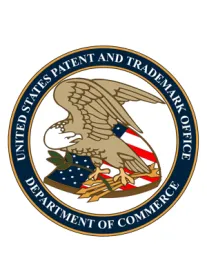In its Final Written Decision, the Board found that Petitioner had shown by a preponderance of the evidence that all challenged claims (claims 1, 2, 5, 6, 10, 11, and 15-17) of the ’531 patent are unpatentable. The ’531 patent “relates to a garment worn during different stages of pregnancy and different stages of postpartum body changes.”
The Board addressed claim construction, stating that claims in an unexpired patent are given their broadest reasonable construction in light of the specification of the patent. The Board first analyzed the term “just beneath the wearer’s breast area.” Patent Owner argued that the term means “beneath the location of the breasts by a very small margin.” However, the term “very small margin” does not provide any further clarity. The Board determined that because neither party offered a construction that provides additional clarity, the plain and ordinary meaning will be given. Also, the Board determined that the term is a term of approximation and that a garment may satisfy claim 1 for one wearer but not another because of differences in the wearers’ body types.
The Board then analyzed the term “different body types” used in claims 2 and 17. Although Patent Owner did not propose constructions for this limitation, its patentability arguments advance an implicit construction of “different body types” that requires an unspecified amount of difference between said body types. The Board determined that the broadest reasonable construction of “different body types” means “two or more body types that are not identical.”
The Board then analyzed the term “an elastic fabric that is contractible elastically to cover an abdomen during different stages of postpartum body changes” from claim 5. Although Patent Owner did not propose constructions for this limitation, the Board determined that its patentability arguments advanced an implicit construction that claim 5 requires a specific, yet unspecified, minimum amount of contractability. However, the specification does not specify any minimum amount of contractability and does not describe or identify any stages of postpartum body changes. Accordingly, the Board determined that the broadest reasonable construction of “during different stages of postpartum body changes” means “during any postpartum body change of any wearer,” which means that the fabric does not have to contract to cover postpartum body changes of every potential wearer or to cover all postpartum body changes of any wearer.
The Board next addressed the asserted grounds of unpatentability. Addressing anticipation based on a JC Penney catalog for fold-over panel jeans, the Board disagreed with Patent Owner’s assertion that the product shown in the catalog did not disclose a panel extending “high enough on the wearer’s body.” The Board found that the JC Penney catalog disclosed a panel substantially covering the belly region and noted that it was the belly region, and not the panel, that the claims require to extend to just beneath the wearer’s breast area. Thus, the Board was persuaded that claim 1 was anticipated by the JC Penney reference. Also, the Board disagreed with Patent Owner’s assertion that Petitioner has failed to prove that the panel of the JCP fold-over panel jeans stretches or expands enough to conform to different body types, because the claims do not require any quantified amount of stretching or expansion and the term “different body types” includes any two or more body types that are not identical. The Board was also not persuaded by Patent Owner’s argument that the panel of the JCP fold-over panel jeans is not described as being contractible as allegedly recited in claim 5. The Board indicated that contraction is always present where there is contraction, and the claims did not require any specific amount of contraction.
With respect to dependent claims 6, 11, 15, and 16, Petitioner asserted obviousness based on the JC Penney catalog applied to claim 1 in view of JC Penney Bootcut jeans. Patent Owner alleged nonobviousness based on the secondary consideration of commercial success. However, Patent Owner failed to link the alleged commercial success of the products to the inventions of claims 6, 11, 15, and 16. Specifically, Patent Owner’s witness conceded that the commercial success of Patent Owner’s products had nothing to do with the unique characteristics of claims 6 and 11, which add limitations directed exclusively to features of the garment lower portion.
Target Corp. v. Destination Maternity Corp., IPR2013-00532
Paper 76: Final Written Decision
Dated: February 12, 2015
Patent: RE43,531 E
Before: Jennifer S. Bisk, Michael J. Fitzpatrick, and Mitchell G. Weatherly
Written by: Fitzpatrick
Related Proceedings: Destination Maternity Corp. v. Target Corp., Case No. 2:12-cv-05680-AB (E.D. Pa.); IPR2013-00531; IPR2014-00508; IPR2013-00530; IPR2013-00533; IPR2014-00509



 />i
/>i

